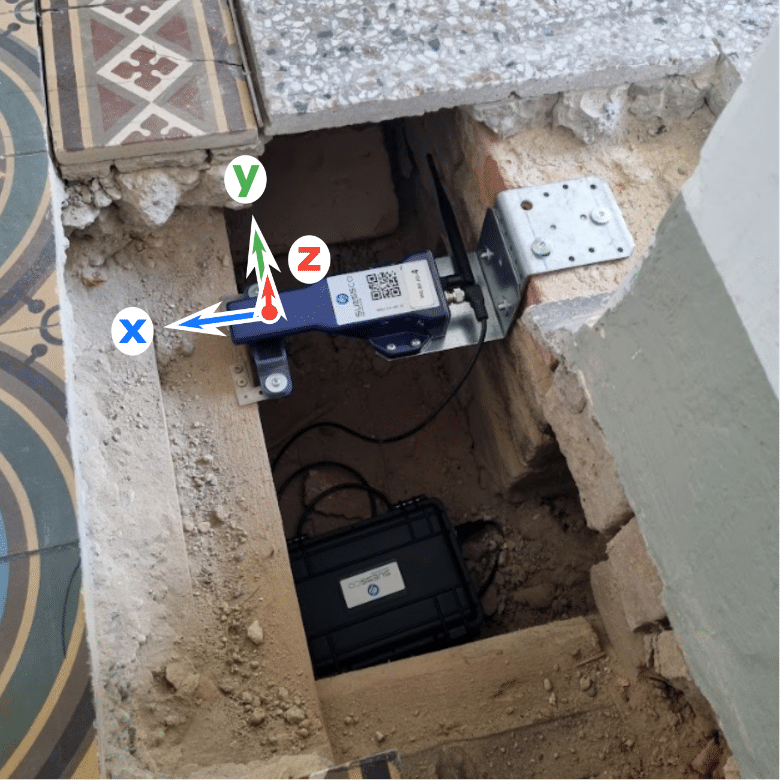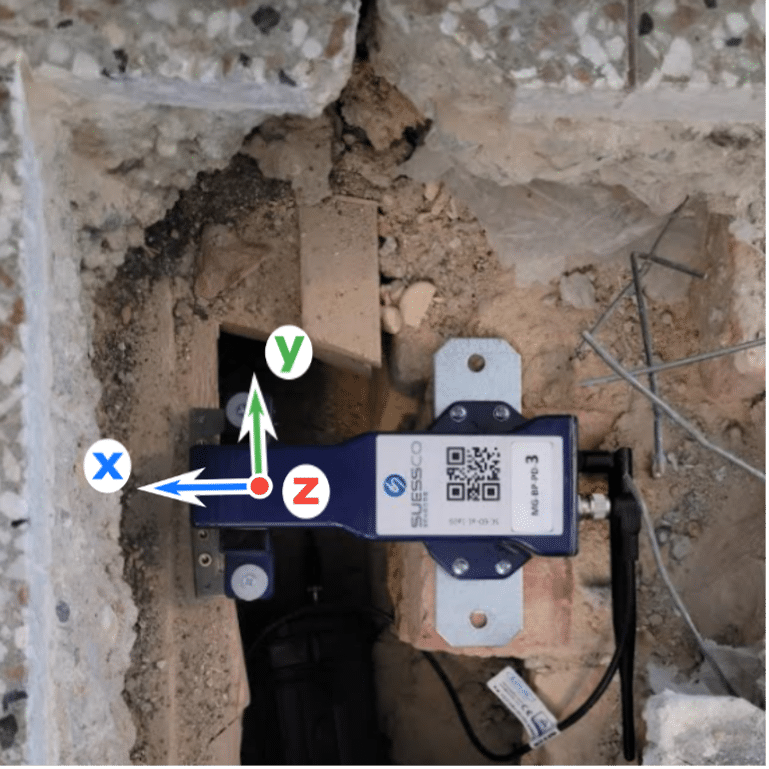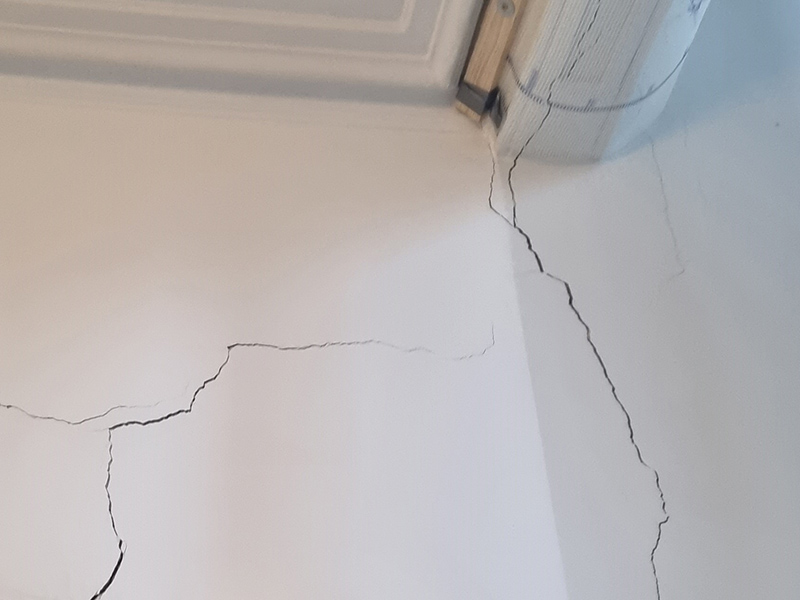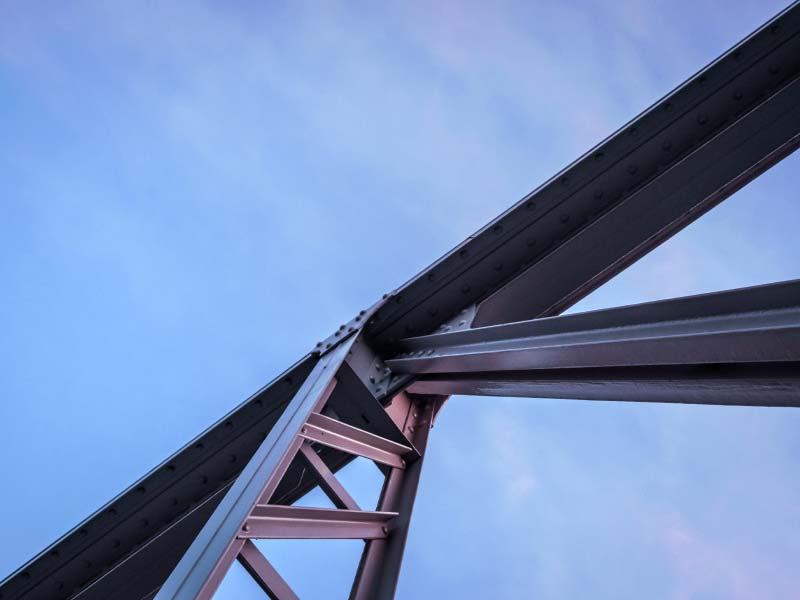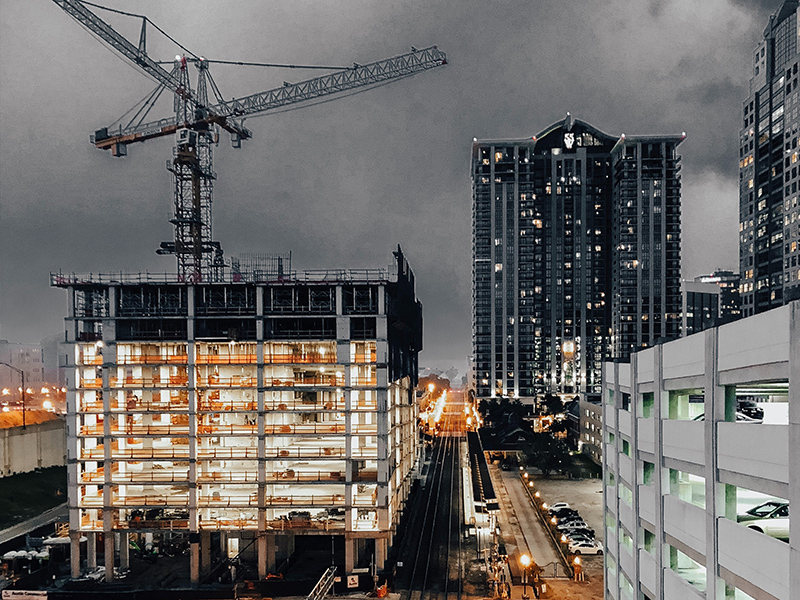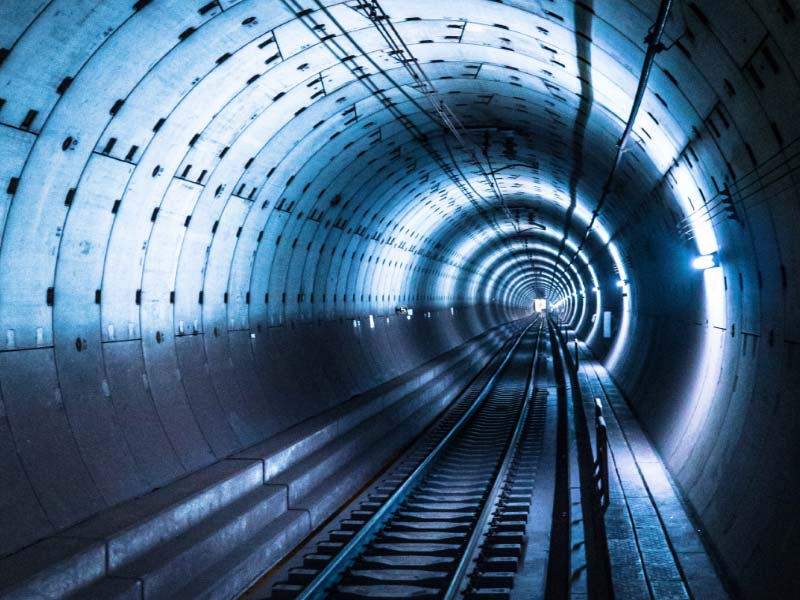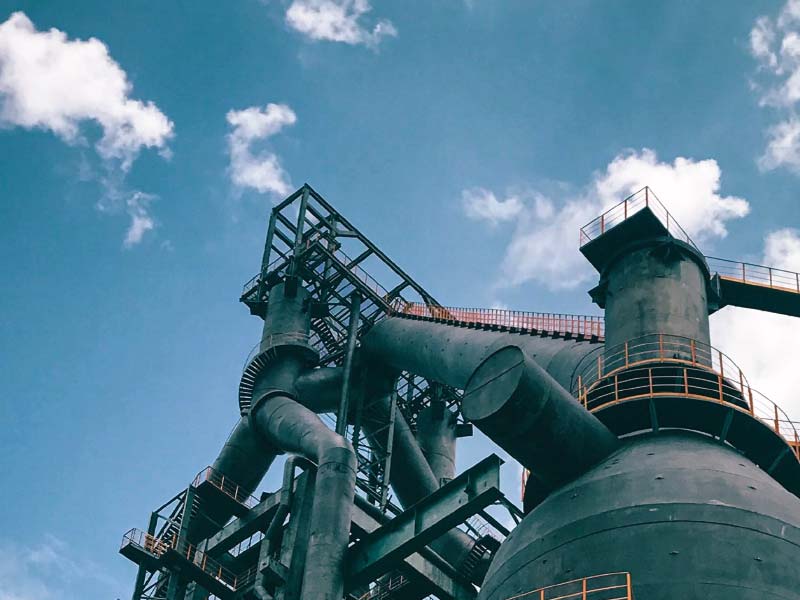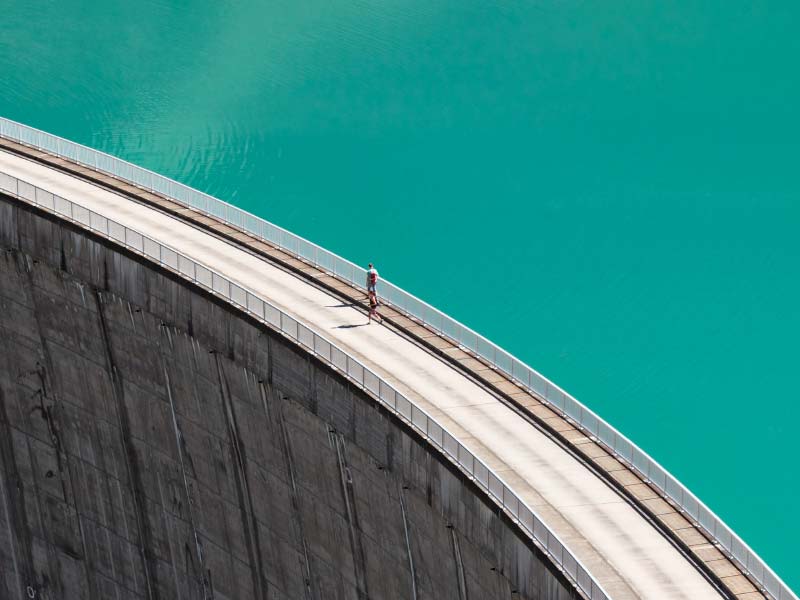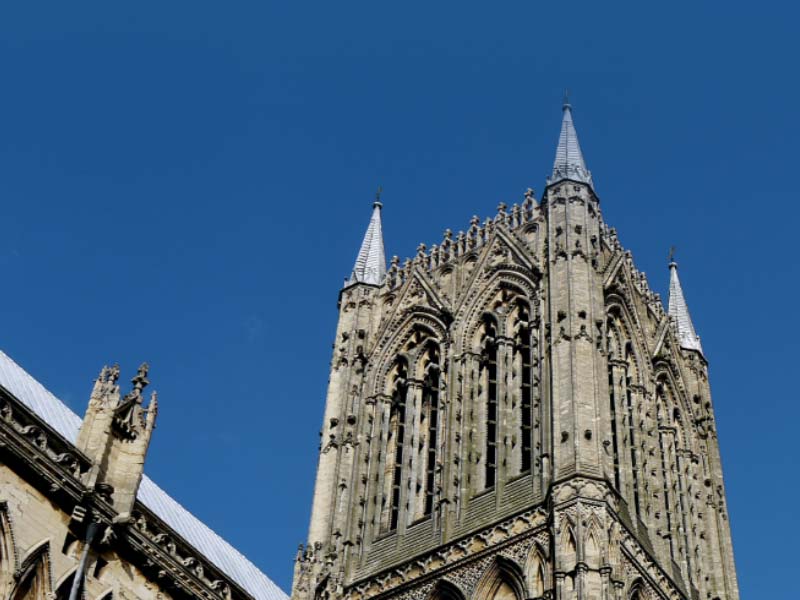SuessCo - Monitoring Case Studies
Take a look at the successful digital monitoring projects with our partners!




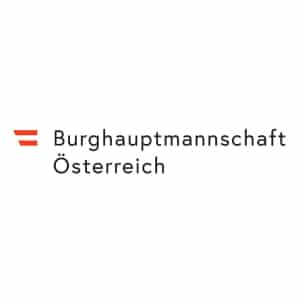


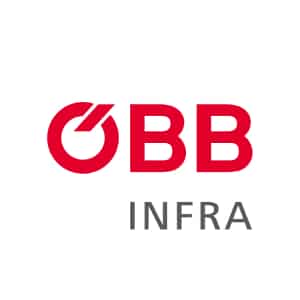






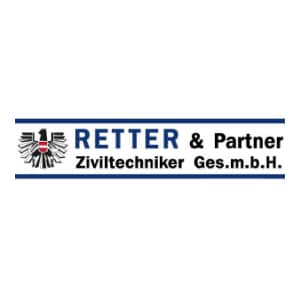
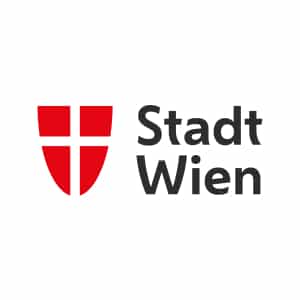




ÖBB - Monitoring case study of bridge bearings
SuessCo ORF - Contribution:
Initial situation
The more than 100-year-old bridge in Lower Austria posed a particular challenge for ÖBB. Geological movements were suspected due to the bridge's location on a slope. However, continuous monitoring of possible movements was not possible with the methods used to date.
Requirements
ÖBB was looking for a technical solution that would enable continuous monitoring of the bridge in order to detect changes caused by geological movements in the slope at an early stage. This was to be possible without the time-consuming and temporary on-site inspections by the company's own personnel, so that measures could be taken in good time.
Solution
A SuessCo 6D sensor was installed at each of six bridge bearings to continuously monitor the bridge. These sensors are combined with integrated temperature sensors and provide precise measurement data in real time, which can be called up via a clear dashboard. This enables those responsible at ÖBB to monitor changes and movements of the bridge continuously and without time-consuming on-site inspections.
The sensors were used to monitor the bridge bearing over a period of several years. The X-axis showed movements in line with expectations, while the Y- and Z-axes remained stable. Particularly noticeable was the "problem bearing" at the apex of the bridge, which showed shear movements due to rail expansion.
This detailed and continuously collected data enables more precise analysis and early detection of potential problems, reducing the cost and effort of manual inspections and significantly improving the quality of monitoring.
Initial situation
The Burghauptmannschaft Österreich looks after numerous buildings and infrastructures of the architectural heritage, including the Hofburg, the Belvedere, the Federal Chancellery and the Palmenhaus. Various methods are used to ensure the optimum preservation of the historic building fabric. These include monitoring systems that serve to safeguard and document the historic buildings.
Requirements
Movements were occurring in the area of the butterfly house, which is why SuessCo Sensors was commissioned to install a monitoring system. This system was to digitally record the movements of the palm house. Based on the monitoring data, the optimal steps for renovation work were determined. SuessCo Sensors also monitored the movements during the work in order to minimize risks and prevent damage.
Solution
SuessCo installed a digital monitoring system consisting of sensors and associated software. The 6D sensors precisely record 3 longitudinal axes, 3 spatial angles and the temperature data. The data is then automatically transmitted via an IoT network and made available to the client via the SuessCo portal.
This measurement data enables a precise condition analysis and the determination of appropriate renovation requirements. The results are correlated and displayed graphically in the dashboard. A safety measure was also implemented as part of the project: Automated alarm values send warning messages to a defined group of people. This allows relevant changes to be recognized immediately and necessary measures to be derived.
The SuessCo sensors were also used during the crane lifting work. They detected any particular changes to the structure caused by the lifting of heavy parts of the building at an early stage. This data made a decisive contribution to ensuring safety during the work.
This example underlines how our digital monitoring projects contribute to the preservation of historic buildings.
Palmenhaus Vienna - Monitoring case study of historic buildings
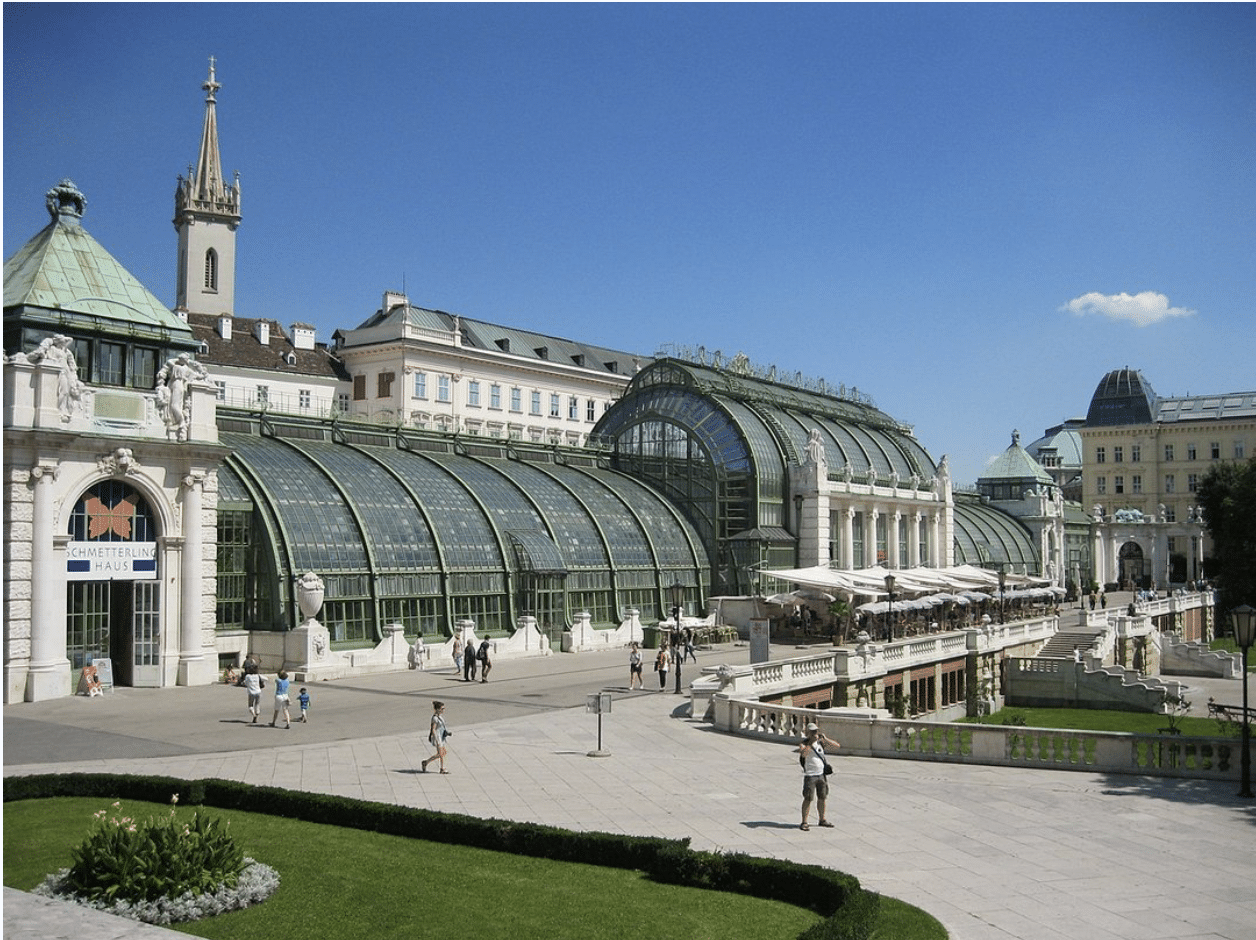
Danube bridge - Monitoring case study of bridges
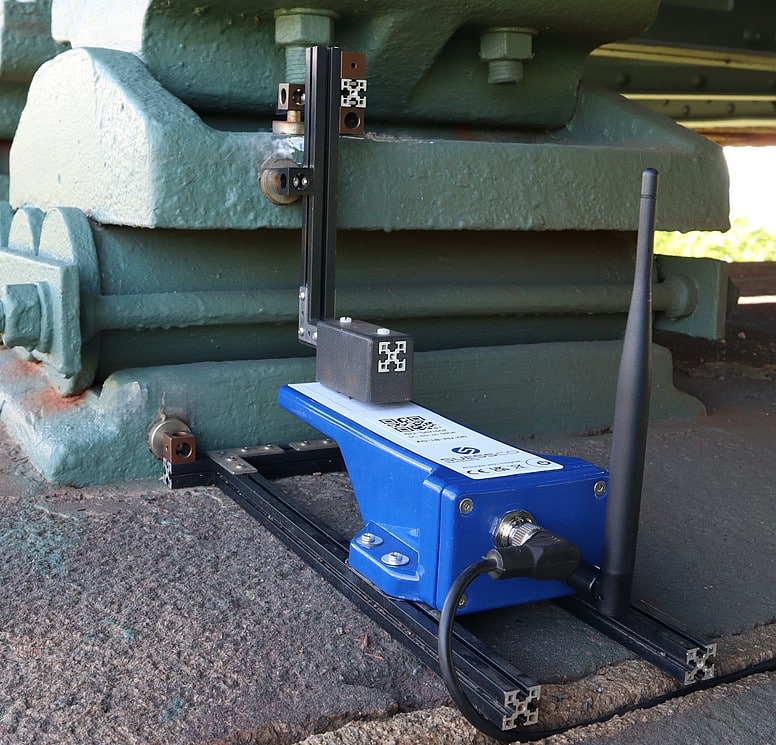
Initial situation
The Danube bridge in Lower Austria between Krems/Stein and Mautern is a historic steel bridge that requires renovation and maintenance work. The bridge will remain in operation during the maintenance work; traffic will only be temporarily regulated on one side.
In addition to the age of the bridge, this maintenance work could potentially lead to critical situations. SuessCo was therefore commissioned to record and continuously monitor the condition of the bridge. This data is to be used to determine and document the safety of the bridge.
Requirements
The monitoring system must permanently measure absolutely reliable movement data and changes in position in order to ensure that the bridge can be used safely at all times. On-site checks are time-consuming and can only be carried out selectively, resulting in gaps in the monitoring. The bridge is to be monitored digitally on a permanent basis in a cost-efficient and cost-neutral manner for the client.
Solution
SuessCo implemented a comprehensive monitoring system that takes all relevant parameters into account. 6D sensors were installed on the bridge bearings to precisely measure movements in all axes and bearing displacements. In addition, integrated temperature sensors record important variables in order to assess the health of the structure.
The stable LTE data connection ensures continuous transmission of the data to the dashboard. This digital solution also provides the bridge construction office with ongoing condition monitoring. This allows specific renovation measures to be derived efficiently and critical changes to be identified in good time. The solution also reduces costs by minimizing the need for on-site inspections while increasing the safety of the bridge.
This project illustrates how digital monitoring projects help to ensure the safety and longevity of bridges.
Initial situation
In a major European city, a multi-storey residential building shows damage to the building fabric. This is caused by subway railroad construction work, tunnel construction and the lowering of the groundwater level. Subsidence in the subsoil also causes the building to lean. As a result, cracks run across several storeys at the connection between the old and new parts of the building.
The property owner ensures the safety of the building through these measures. At the same time, he also monitors the damage and secures legally usable evidence of the causes of subsidence. The measures give the residents, who are concerned about the stability of their living space, a sense of security.
Requirements
The monitoring system records the movements of the building continuously and precisely. This allows further damage to be detected at an early stage and causes to be identified. Particular attention is paid to visible cracks in the stairwell and the metal structure of the elevator shaft. These are crucial for the safe operation of the elevator. The sensor data is available online at all times so that the situation can be assessed on an ongoing basis. Experts responsible for this continuously assess the data.
Solution
A structural engineer analyzes the situation and defines the optimum positions for the sensors. Based on his static analyses, two SuessCo 3D sensors are installed in the stairwell. These monitor the movements of the walls and the development of cracks with micrometer precision. In addition, three 6D sensors are installed in the floor of the mezzanines and in the attic.
The sensors continuously supply data, which is stored and graphically processed in the SuessCo DataHub. The structural engineer has direct access to this data and can therefore carry out evaluations in real time. This allows them to immediately recognize changes in the stability of the structure and react to them in a targeted manner.
The round-the-clock monitoring increases the residents' sense of security. It ensures that potential dangers are detected at an early stage. At the same time, the solution supports the owner in dealing with the damage and legally enforcing their claims.
This project is an example of how digital monitoring projects help to ensure the safety and stability of structures.
Digital monitoring project for residential building damage caused by subway railroad construction
Stuttgart 21" railroad station project - monitoring case study of movements during the construction phase
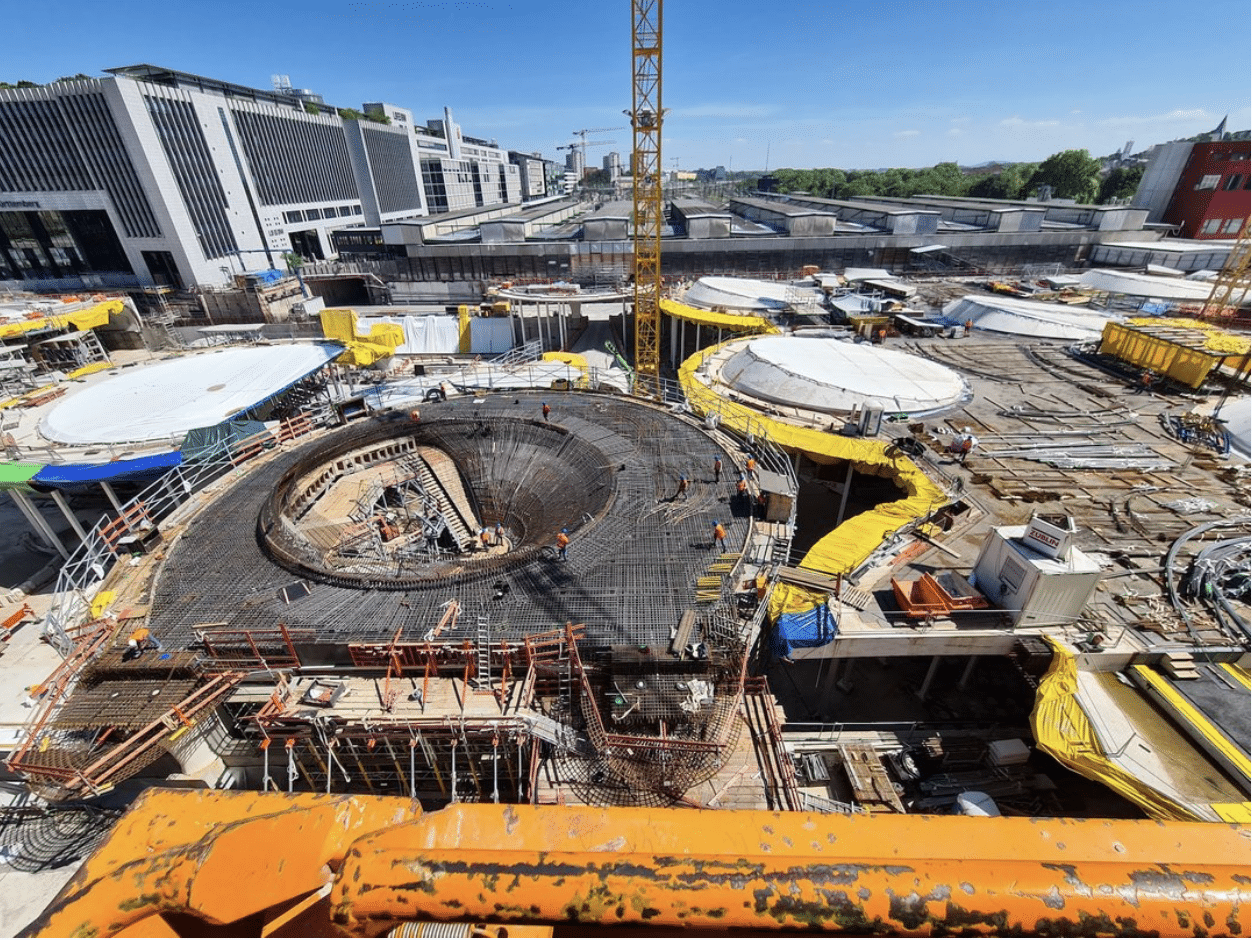
Initial situation
Stuttgart 21 is a comprehensive transportation and urban development project that is redesigning the Stuttgart railroad junction. As part of the project, new, mainly underground lines, passenger stations and a new main station are being built. One of the listed buildings is the historic "Bonatzbau" station building at Stuttgart Central Station, which is being extensively modernized.
Requirements
The STRABAG/Züblin construction group commissioned SuessCo Sensors to set up a digital monitoring system. This system was to measure vibrations, cracks, subsidence and tilting of the historic building fabric during the renovation work. The aim was therefore to identify potential problem areas at an early stage, initiate appropriate improvement measures and ensure digital documentation.
Solution
SuessCo implemented an innovative, digital monitoring system. It comprises 6D sensors that record 3 longitudinal axes, 3 spatial angles and temperature data. The data is then automatically documented digitally via an IoT network and made available to the client via the SuessCo portal. Vibration sensors were also used to record vibrations based on previously defined threshold values.
In addition, a GNSS system has been integrated to monitor absolute position changes. The latest SuessCo innovation based on GNSS is used for this purpose. This system records the absolute position of a point in relation to a zero point with an accuracy of ±2 mm.
The sensor data is automatically transmitted via the mobile network. The various sensors, their positions and measured values can then be viewed in the online portal. Raw data is also available for download. The display of measured values, zero values, differences and alarms can be flexibly adapted to customer requirements.
This innovative sensor and monitoring system provides a fully digital solution. The manual surveying activities previously required on such construction sites can now be carried out more efficiently, cost-effectively and simply. At the same time, the system facilitates seamless and permanent documentation for the project operator.
This project shows how digital monitoring projects can contribute to safety and documentation during the construction phase.
What our customers say
"Thanks to the high-precision sensors from SuessCo Sensors, we were able to continuously monitor changes in the Palm House. This data helps us to protect this wonderful building and its historic structure."
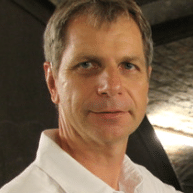
Dipl.-HTL-Ing. Helmut Heninger
Burghauptmannschaft Austria
Applications
Contact
"*" indicates required fields




